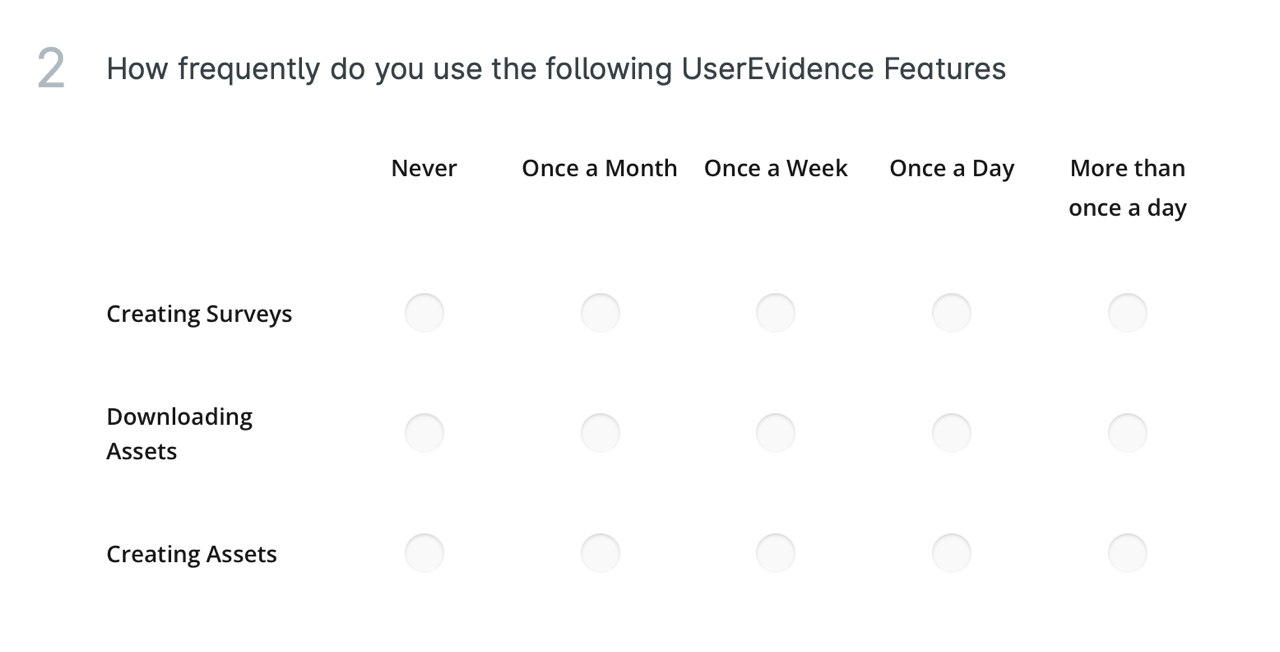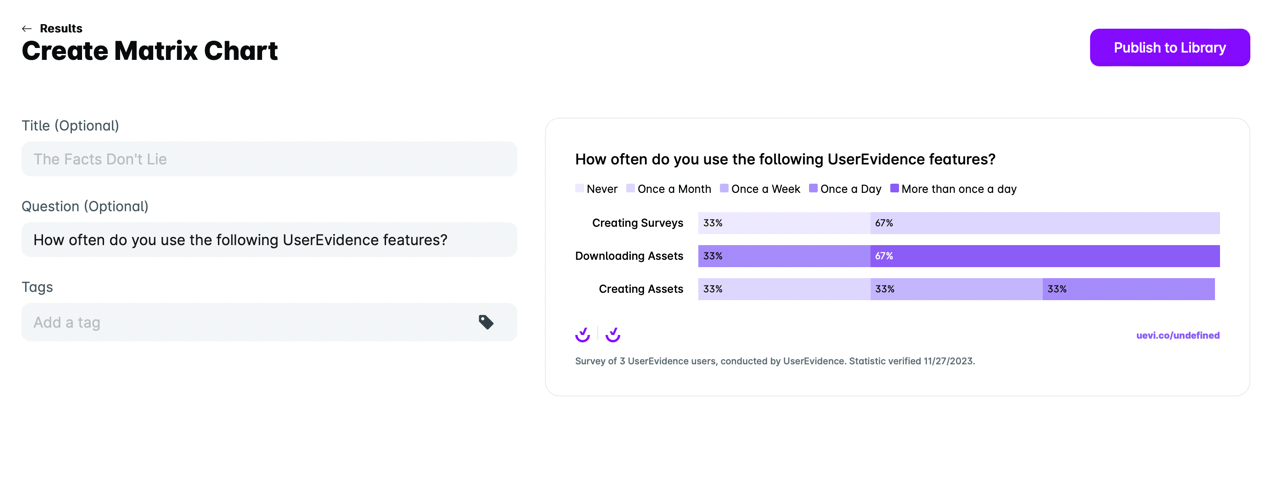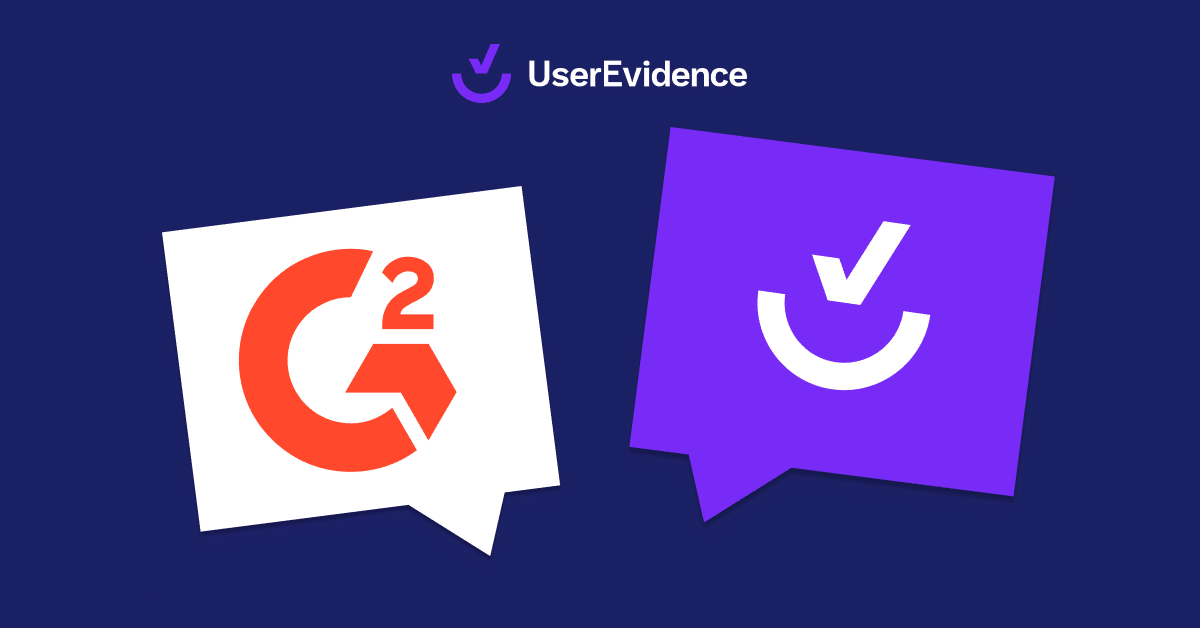Anybody else feel like they blinked and all of a sudden it’s December?
We’ve been pretty busy over here at UserEvidence on all fronts, and I’m pumped to tell you about some cool new features we’ve been rolling out over the last few weeks.
Custom sending domains
We’re starting off with the rollout of a highly requested feature: Custom sending domains and link branding. Now, instead of using the default UserEvidence domain, you can use your own (like @yourcompany.com).
Custom sending domains aren’t just about looking good (but let’s be honest, they do) — they’re about being on-brand everywhere. Sending an email that has your company’s name attached to it keeps your users immersed in your business, and branded links keep you looking professional.
Setting up custom domains is pretty straightforward, but you will need a little help from your IT team to update your DNS settings. Get the full rundown with more details here.
Slider questions
If you ever have questions you want to ask that require a certain amount of nuance, slider surveys can help.
Slider questions let respondents select a value within a range displayed on a slider bar. They’re particularly useful for closed-ended questions that have a wide range of answer options (like “How happy are you with this feature?” for example).
Slider questions within UserEvidence are highly customizable. You can choose the minimum and maximum values, and the increment by which the answer option increases or decreases.

Matrix questions
Matrix questions let you group multiple questions together into one tidy package so you don’t overwhelm your respondents.

Matrix questions are an awesome option when you want to gather information along a scale, but they’re not as flexible as a slider question. They’re great for when you want to give people options, but still want to keep the data rigid. Some examples include measuring:
- Agreement on a scale from Strongly Agree to Strongly Disagree
- Likelihood (from Very Likely to Not Very Likely)
- Importance (Very Important to Not Important)
- Frequency (Always to Never)
- Quality (Excellent to Poor)
And everything in between.
We’ve just launched matrix questions in UserEvidence, but we’ve also added our own spin on them. The data collected through a matrix question can be turned into a Matrix Chart: a stacked bar chart that portrays the survey results to each of the sub-questions in the matrix.

Send us your thoughts 💭
What good would a user survey company be if we didn’t listen to our own users? We’re always looking for your feedback on how to make these product updates better.
Let your CSM know if you have ideas, or drop me a line at mark@userevidence.com. I read every email from our customers (I promise).





